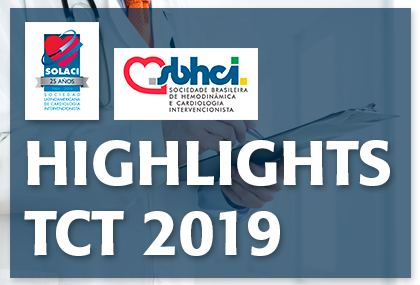Courtesy of the SBHCI.
Monotherapy with a P2Y12 inhibitor after a minimum period (3 months) of dual antiplatelet antiaggregation (DAPT) is a valid treatment option to reduce bleeding in patients at high risk of bleeding complications.

The present double-blind study presented at TCT 2019 simultaneously published in NEJM analyzed ticagrelor monotherapy (prior 3 months DAPT) vs DAPT in patients undergoing PCI at high risk of bleeding.
After 3 months of ticagrelor + aspirin, patients free from ischemic or bleeding events were randomized to ticagrelor + placebo (ticagrelor monotherapy) vs. ticagrelor + aspirin (DAPT) up to 12 months.
Of 9006 included patients, 7119 were finally randomized (the rest were excluded for presenting bleeding or ischemic events).
Primary end point was BARC bleeding 2, 3 or 5.
At one year, primary end point was seen in 4% of patients randomized to ticagrelor + placebo vs. 7.1% in patients with ticagrelor + aspirin (p<0.001).
The difference was driven mainly by BARC 2 bleeding, since major bleeding (BARC 3 or 5) resulted similar, as was all cause death, non-fatal stroke and non-fatal infarction.
Conclusion
PCI Patients at high risk of bleeding after 3 months DAPT can continue with ticagrelor monotherapy up to 12 months, reducing bleeding events with no risk of increasing ischemic events, compared against ticagrelor + aspirin.
Courtesy of the SBHCI.
Link to the SBHCI publication HERE
Original Title: TWILIGHT: A Randomized Trial of Ticagrelor Monotherapy vs. Ticagrelor-Plus-Aspirin Beginning at 3 Months in High-Risk Patients Undergoing PCI.
Author of the Original Article: Roxana Mehran.
Get the latest scientific articles on interventional cardiologySubscribe to our weekly newsletter
We are interested in your opinion. Please, leave your comments, thoughts, questions, etc., below. They will be most welcome.





